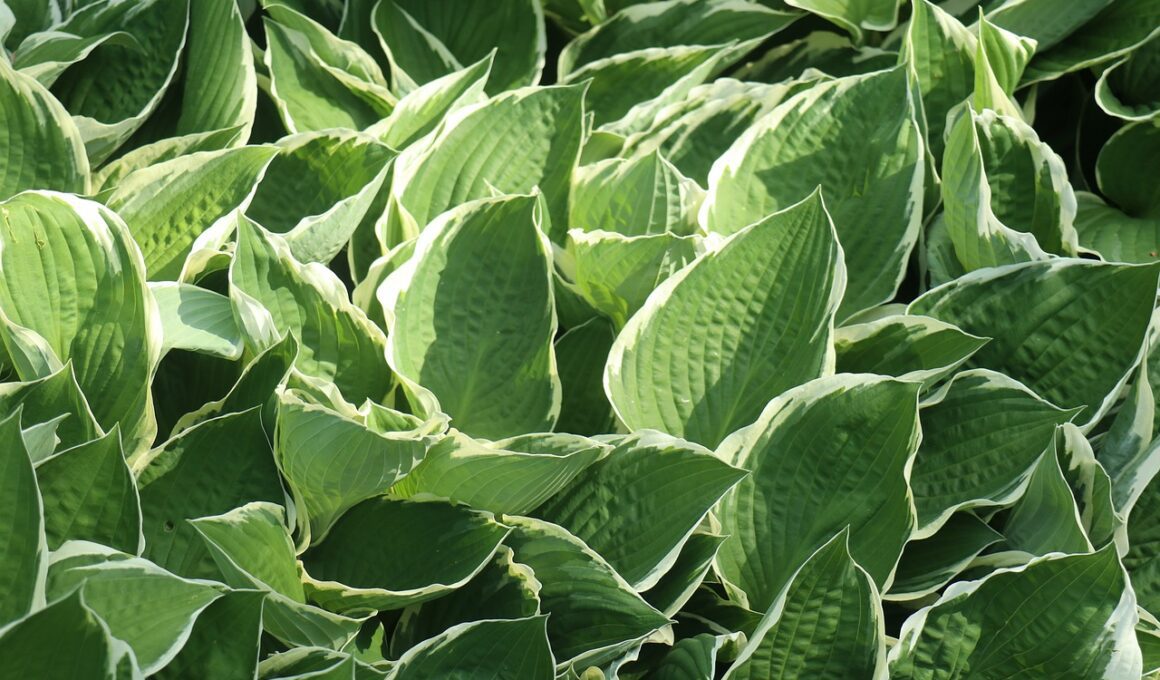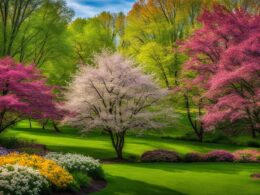Are you looking for an easy way to add some color and life to your garden all year round? Look no further than evergreen shrubs! These hardy plants are perfect for those who want a low-maintenance garden that still looks stunning.
But with so many options out there, it can be hard to know which ones to choose. That’s why we’ve put together a list of the best evergreen shrubs for flowering, so you can have a beautiful garden without any of the stress.
Whether you’re a seasoned gardener or just starting out, these shrubs are sure to impress. From the vibrant blooms of azaleas and camellias to the sweet scent of gardenias, there’s something for everyone. And with the added benefit of being evergreen, you can enjoy their beauty all year round.
So why wait? Read on to discover the best evergreen shrubs for flowering and start planning your dream garden today!
Azaleas
You’ll love the vibrant blooms of azaleas in your garden. These evergreen shrubs are a popular choice for their stunning flowers that come in a variety of colors, from white and pink to red and purple. Azaleas are also easy to grow and maintain, making them a perfect addition to any garden.
Propagation techniques for azaleas include taking cuttings from established plants and rooting them in a mix of soil and sand. You can also propagate azaleas by layering, which involves bending a low branch to the ground and covering it with soil. Once the branch develops roots, it can be cut from the parent plant and transplanted to a new location.
When it comes to ideal growing conditions, azaleas prefer acidic soil with good drainage. They also need partial shade, as too much sun can damage their delicate blooms. Watering is important, especially during dry spells, but be careful not to overwater as this can lead to root rot.
With the right care, your azaleas will thrive and provide beautiful flowers year after year.
Camellias
If you’re looking for a shrub that will bloom for an extended period of time, look no further than the camellia.
These plants boast a long blooming season that can last for weeks or even months. And if you’re after a showy display, the camellia won’t disappoint with its large and colorful flowers.
Plus, they’re shade tolerant, meaning you can enjoy their beauty even in the shadier parts of your garden.
Long Blooming Season
These plants keep their flowers for a long time, making them a standout choice for any garden. If you’re looking for a shrub that will give you long-lasting blooms, consider planting a hydrangea.
Not only do hydrangeas have beautiful, large flowers, but they also come in a variety of colors, from pink to blue to white. To ensure your hydrangea blooms for as long as possible, be sure to prune it properly and consider planting it alongside other complementary plants, like hostas or ferns.
Another great option for a long blooming season is the butterfly bush. As the name suggests, this shrub is a magnet for butterflies, and its fragrant flowers will bloom from early summer until the first frost.
Like the hydrangea, it’s important to prune the butterfly bush properly to encourage new growth and more blooms. Consider planting it with other butterfly-friendly plants, like coneflowers or black-eyed Susans, to create a vibrant and lively garden space.
With these two shrubs in your garden, you’ll be able to enjoy beautiful blooms for months on end.
Large and Showy Flowers
Get ready to be amazed by the stunning, eye-catching blooms of these evergreen shrubs. These shrubs produce large and showy flowers that will definitely make a bold statement in any garden.
Their flowers come in a variety of colors such as pink, red, white, and even purple, making them a perfect choice for any gardener who wants to add a pop of color to their outdoor space.
To keep these shrubs looking their best, it’s important to use proper pruning techniques. Regular pruning will help maintain their shape and promote healthy growth. It’s best to prune these shrubs in the early spring or late fall, after they have finished blooming.
By following these simple tips, you can enjoy the large and showy flowers of these evergreen shrubs for years to come.
Shade Tolerant
With their ability to thrive in shady areas, these plants are a great addition to any garden looking to add some variety in terms of sunlight requirements. Designing with shade can be a challenge, but these evergreen shrubs make it easier.
Here are four of the best shade tolerant evergreen shrubs for flowering:
-
Azaleas: These beautiful shrubs come in a variety of colors and can add a pop of color to any shady spot. They prefer well-drained soil and partial shade.
-
Camellias: These stunning shrubs produce large, showy flowers in shades of red, pink, and white. They prefer slightly acidic soil and partial shade.
-
Rhododendrons: These shrubs are known for their large clusters of flowers in shades of pink, purple, and white. They prefer well-drained soil and partial shade.
-
Hydrangeas: These popular shrubs produce large, round clusters of flowers in shades of blue, pink, and white. They prefer moist soil and partial shade.
In addition to these evergreen shrubs, there are also many shade tolerant groundcovers that can add texture and interest to a shady garden. Best shade tolerant groundcovers include periwinkle, creeping phlox, and hostas.
With these plants, you can add color and interest to even the shadiest spots in your garden.
Rhododendrons
If you’re looking for a pop of color and vibrant blooms in your garden, Rhododendrons are a fantastic option to consider. These evergreen shrubs are known for their stunning flowers that come in a variety of colors, from deep reds to soft pinks and purples. Rhododendrons are also shade tolerant, making them a great choice for gardens with limited sunlight.
To ensure your Rhododendrons thrive, it’s important to practice proper care and maintenance. Regular pruning is necessary to keep the shrubs looking their best and to promote healthy growth. You should also make sure to plant them in well-draining soil and avoid overwatering, as Rhododendrons are susceptible to root rot.
Overall, Rhododendrons are a beautiful and low-maintenance option for adding color and interest to your garden. With the right care and attention, they can provide years of enjoyment and beauty. So why not consider adding one or two to your landscaping this year?
Gardenias
Gardenias are a fantastic choice for adding a touch of elegance and fragrance to your garden, and taking care of them is easier than you might think. These evergreen shrubs produce gorgeous white flowers with a sweet scent that can fill your entire yard. They prefer a slightly acidic soil and a spot where they can get some morning sun but are protected from hot afternoon sun.
Pruning techniques are essential for keeping gardenias healthy and thriving. You should prune them right after they finish blooming, cutting back any dead or damaged branches and shaping the plant to keep it looking neat. Additionally, you should remove any spent flowers to encourage new blooms. Regular pruning will also help the gardenia maintain its shape and size.
Pest management is key to keeping gardenias healthy. These plants are susceptible to aphids, scale insects, and spider mites, which can damage the leaves and flowers. Keep an eye out for these pests and treat them immediately if you notice them. You can use insecticidal soap or neem oil to control these pests without harming the plant.
With proper care and attention, your gardenias will reward you with beautiful blooms and heavenly fragrance for years to come.
Winter Jasmine
If you want a shrub that blooms early in the winter, is drought tolerant, and has bright yellow flowers, you should consider winter jasmine.
This shrub is a great addition to any garden because it can add color to an otherwise dreary winter landscape.
Winter jasmine is easy to care for and can thrive in a variety of soil types, making it a versatile choice for any gardener.
Early Blooming
You’ll be amazed at the stunning display of colorful blooms that will greet you in the early spring when you plant early blooming evergreen shrubs. These shrubs are the perfect way to add a pop of color to your garden before other plants have even begun to sprout.
Here are three of the best evergreen shrubs for early blooming:
-
Camellias: Camellias are prized for their large, beautiful flowers that come in a variety of colors. They’re relatively easy to care for, but pruning techniques and best soil conditions are important to keep in mind. These shrubs prefer slightly acidic soil and benefit from regular fertilization.
-
Pieris: Pieris, also known as ‘lily of the valley shrubs,’ produce clusters of delicate flowers in shades of white, pink, and red. They prefer well-drained soil and will do well in full sun or partial shade. Be sure to prune them back after blooming to keep them healthy and looking their best.
-
Viburnums: Viburnums are a versatile group of shrubs that come in a variety of sizes and shapes. They produce clusters of fragrant flowers in early spring and many varieties also have attractive foliage and berries. They prefer well-drained soil and will do well in full sun or partial shade. Prune them back after blooming to encourage bushy growth.
By planting these early blooming evergreen shrubs, you’ll have a beautiful burst of color in your garden that will last for weeks. Just remember to keep them well-maintained with proper pruning techniques and the right soil conditions, and you’ll be rewarded with a stunning display year after year.
Bright Yellow Flowers
When planning your garden, don’t forget to include bright yellow flowering shrubs to add a cheerful pop of color that will catch your eye from afar.
There are several top yellow flowering shrubs for landscaping that you can choose from, such as the Forsythia, the Kerria Japonica, and the Spirea. These shrubs aren’t just beautiful, but they’re also low-maintenance and can thrive in various growing conditions.
To incorporate yellow shrubs in a garden design, you can plant them in groups or use them as accents around your yard. For example, you can plant Forsythia shrubs in a row along a fence or use Kerria Japonica as a border for a flower bed.
You can also mix and match different yellow flowering shrubs to create a diverse and vibrant garden. If you’re looking to add a burst of color to your garden, then don’t hesitate to include some bright yellow flowering shrubs in your landscaping.
Drought Tolerant
If you’re looking for an evergreen shrub that can withstand hot and dry conditions, you’ll want to focus on drought-tolerant options. These plants are not only hardy, but they also require less water, making them ideal for xeriscaping techniques.
When it comes to flowering shrubs, there are several native plant options that will fit the bill. One great choice is the manzanita shrub, a native plant that thrives in dry, rocky soils. With its small, pink or white flowers and shiny green leaves, the manzanita adds a touch of beauty to any garden while requiring minimal maintenance.
Another excellent option is the ceanothus, also known as the California lilac. This shrub boasts beautiful blue or purple flowers and can tolerate even the driest conditions. By choosing drought-tolerant flowering shrubs like these, you can create a beautiful, low-maintenance garden that will thrive with minimal watering.
Frequently Asked Questions
What is the ideal planting location for these evergreen shrubs?
To ensure your evergreen shrubs thrive, it’s important to plant them in the ideal soil conditions. They prefer well-draining soil that is slightly acidic, with a pH around 5.5 to 6.5.
In terms of sun exposure, most evergreen shrubs prefer full sun to partial shade, but it’s important to research the specific needs of your chosen plant.
Companion plants can also be helpful, as they can attract beneficial insects and improve soil health. Good options include ferns, hostas, and heucheras.
By paying attention to these important factors and choosing the right plants, you can create a beautiful and healthy evergreen shrub garden.
How often should these shrubs be pruned and what is the best time of year to do so?
To keep your evergreen shrubs healthy and looking their best, it’s important to prune them regularly. The frequency of pruning depends on the growth patterns of the specific shrub, but as a general rule, it’s recommended to prune once a year.
The best time of year to prune also varies depending on the shrub, but it’s typically done in late winter or early spring before new growth begins. Pruning helps to control the size and shape of your shrubs, remove dead or diseased branches, and promote healthy growth.
By keeping up with pruning frequency and timing, you’ll help your evergreen shrubs thrive for years to come.
Are these shrubs susceptible to any particular pests or diseases?
If you’re looking to keep your evergreen shrubs healthy and vibrant, it’s important to be aware of common pests and diseases that can affect them. Some of the most common pests that can damage evergreen shrubs include spider mites, aphids, and scale insects.
To prevent these pests from taking over your shrubs, try using natural prevention techniques like spraying the plants with a mixture of water and dish soap, or planting companion plants that repel pests. Additionally, simple care techniques like regular watering and feeding can help keep your shrubs strong and healthy, making them less susceptible to disease and pests.
With a little bit of attention and care, you can keep your evergreen shrubs looking beautiful and thriving for years to come.
Can these shrubs be grown in containers or are they best suited for planting in the ground?
If you’re considering container gardening with evergreen shrubs, there are a few things to keep in mind. First, make sure to use a high-quality potting mix that’s well-draining and nutrient-rich.
You’ll also want to choose a container that’s large enough to accommodate the mature size of your shrub and has good drainage. When it comes to soil requirements, evergreen shrubs prefer slightly acidic soil with a pH of 5.5 to 6.5.
While these shrubs can be grown in containers, they may not reach their full potential and may require more frequent watering and fertilization compared to those planted in the ground.
Overall, with proper care and attention, evergreen shrubs can thrive in containers and add beauty to your outdoor space.
How long do these shrubs typically bloom for and is there anything that can be done to extend their flowering period?
To extend the flowering period of your evergreen shrubs, there are a few things you can do. One way is to deadhead the spent blooms regularly. This will encourage the plant to produce more flowers.
Another way is to fertilize your shrubs with a slow-release fertilizer that’s high in phosphorus. This nutrient’s essential for flower production. As for the best fertilizer for evergreen shrubs, look for one that’s specifically formulated for your type of plant and follow the instructions carefully.
With proper care and attention, your evergreen shrubs can bloom for several weeks or even months, adding beauty and interest to your garden.
Conclusion
So there you have it, you now know the best evergreen shrubs for flowering. Whether you want vibrant colors or sweet scents, azaleas, camellias, rhododendrons, gardenias, and winter jasmine are all excellent choices.
Remember to choose the right shrub for your climate and soil type, and give them the proper care they need to thrive. With a little bit of effort and patience, you can enjoy beautiful, blooming shrubs all year round.
Don’t be afraid to experiment with different shrubs and combinations of shrubs to create your own unique garden. The possibilities are endless and the results can be truly breathtaking.
So go ahead, get your hands dirty and start planting your very own evergreen shrub garden today!








